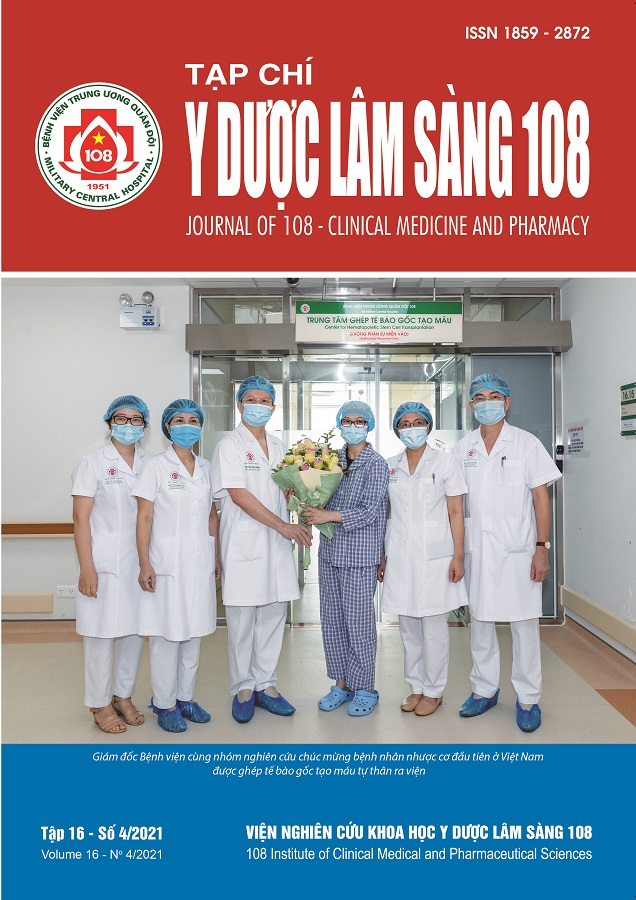Diet in acne patients and its relationship to disease severity at Binh Thuan Provincial Hospital of Dermatology
Main Article Content
Keywords
Abstract
Objective: To describe epidemiological characteristics and severity of acne patients. To determine the proportions of foods commonly used in the diet of acne patients. To determine the association between the use of certain foods and acne severity. Subject and method: A descriptive cross-sectional study was conducted on 384 acne patients who visited the Dermatology Hospital of Binh Thuan province from 4/2020 to 10/2020. Result: Acne patients regularly eat foods with low glycemic index (71.9%), foods with high glycemic index (68%), fat (62.8%), milk (60.9%), fast food (58.9%), chocolate (34.4%), and omega 3 rich food (30.5%). Patients who regularly use milk and dairy products had 1.85 times more severe acne, 2.30 times more severe acne with fatty foods, 1 times more severe acne with fast food. 1.41 times and using chocolate with severe acne 1.73 times higher than patients not using or rarely using it. Conclusion: Milk, fat, fast food and chocolate are the foods that increase the risk of severe acne in patients.
Article Details
References
2. Phạm Thị Tiếng (2002) Mụn trứng cá. Bài giảng Da liễu, Nhà Xuất bản Y học, tr. 239-252,
3. Âu Thị Kim Khánh (2017) Khảo sát chế độ ăn ở bệnh nhân mụn trứng cá đến khám tại Bệnh viện Da liễu Thành phố Hồ Chí Minh từ tháng 10/2016- 03/2017. CKII, Trường Đại học Y khoa Phạm Ngọc Thạch, tr. 74-111.
4. Phạm Thị Bích Na (2013) Nồng độ kẽm huyết thanh trên bệnh nhân mụn trứng cá đến khám và điều trị tại Bệnh Viện Da Liễu Thành phố Hồ Chí Minh từ tháng 11/2012 đến tháng 03/2013. Trường Đại Học Y dược Thành phố Hồ Chí Minh.
5. Eman M, KamallL E, Youssef M, Youssel K (2014) Diet and acne in Upper Egypt. American Journal of Dermatology and Venerology: 13-22.
6. Danby WF (2010) Nutrition and acne. Clinics in Dermatology 28(6): 598-604.
7. Burris J, Rietkerk W, Woolf K (2014) Relationships of self reported dietary factors and perceived acne severity in a cohort of New York young adults. J Acad Nutr Diet 114(3): 384-392.
8. Cordain L (2005) Implications for the role of diet in acne. Emin Cutan Med Surg 24(2): 84-91.
9. Pearl A, Arroll B, Lello J, Birchall NM (1998) The impact of acne: A study of adolescents' attitudes, perception and knowledge. N Z Med J 111(1070): 269-271.
10. Smith RN, Mann NJ, Braue A, Mäkeläinen H, Varigos GA (2007) The effect of a high-protein, low glycemic-load diet versus a conventional, high glycemic-load diet on biochemical parameters associated with acne vulgaris: A randomized, investigator-masked, controlled trial. Am J Clin Nutr 86(1): 107-115.
 ISSN: 1859 - 2872
ISSN: 1859 - 2872
